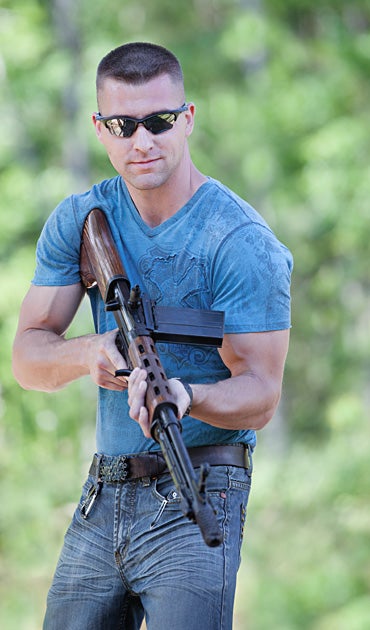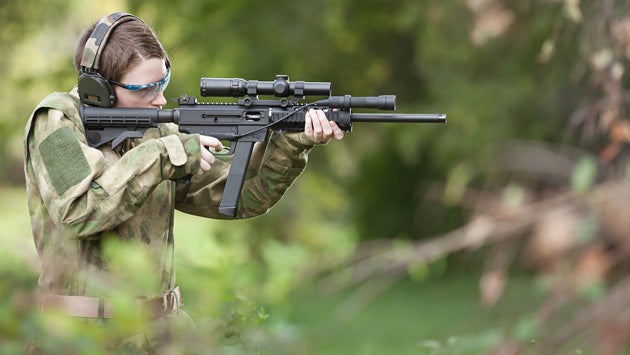- Send email to Oleg Volk.
-
Recent Posts
Recent Comments
- Boris on Another quiet neighbor
- Boris on The vintage and the modern
- John Dickson on Blowback or roller delayed? Cast your vote.
- dave in pa. on A machete kind of day
- Larry Arnold on A machete kind of day
Archives
- September 2025
- August 2025
- April 2025
- March 2025
- February 2025
- December 2024
- November 2024
- October 2024
- September 2024
- August 2024
- July 2024
- June 2024
- May 2024
- April 2024
- March 2024
- January 2024
- December 2023
- April 2023
- November 2022
- June 2022
- May 2022
- April 2022
- March 2022
- February 2022
- January 2022
- December 2021
- November 2021
- October 2021
- June 2021
- January 2021
- December 2020
- October 2020
- September 2020
- August 2020
- July 2020
- May 2020
- April 2020
- March 2020
- February 2020
- January 2020
- December 2019
- November 2019
- October 2019
- September 2019
- August 2019
- May 2019
- April 2019
- March 2019
- February 2019
- January 2019
- December 2018
- November 2018
- October 2018
- September 2018
- August 2018
- July 2018
- June 2018
- May 2018
- April 2018
- March 2018
- February 2018
- January 2018
- December 2017
- November 2017
- October 2017
- September 2017
- August 2017
- July 2017
- June 2017
- May 2017
- April 2017
- March 2017
- February 2017
- January 2017
- December 2016
- November 2016
- October 2016
- September 2016
- August 2016
- July 2016
- June 2016
- May 2016
- April 2016
- March 2016
- February 2016
- January 2016
- December 2015
- November 2015
- October 2015
- September 2015
- August 2015
- July 2015
- June 2015
- May 2015
- April 2015
- March 2015
- February 2015
- January 2015
- December 2014
- November 2014
- October 2014
- September 2014
- August 2014
- July 2014
- June 2014
- May 2014
- April 2014
- March 2014
- February 2014
- January 2014
- December 2013
- November 2013
- October 2013
- September 2013
- August 2013
- July 2013
- June 2013
- May 2013
- April 2013
- March 2013
- February 2013
- January 2013
- December 2012
- November 2012
- October 2012
- September 2012
- August 2012
- July 2012
- June 2012
- May 2012
- April 2012
- March 2012
- February 2012
- January 2012
- December 2011
- November 2011
- October 2011
- September 2011
- August 2011
- July 2011
- June 2011
- May 2011
- April 2011
- March 2011
- February 2011
- January 2011
- 0
Categories
- advice requested
- ammunition
- armor
- art
- author
- beast
- book
- camera and lens
- cat
- civil rights
- computing
- craft
- dangerous
- economics
- flowers
- food
- green
- holster
- hoster
- humor
- hunting
- interesting people
- knife
- light/laser
- nature
- nude
- pet
- pink
- pistol
- portrait
- prey
- red
- rifle
- rkba
- self-defense
- shotgun
- sound suppressor
- tools
- training
- travel
- Uncategorized
- video
- weapon
- wordpress
Meta
Visible bullet trace
Student in Condition 1 carry course fires a Glock 23 at the range. Bullet trace is visible. I recently attended one of their sessions and found both classroom and range portions very informative.
Austin, TX new travel dates.
I will be there November 16-17. The joint dinner/get-together is planned for 8pm on the 16th, place to be decided.
Good news on the computer front
Today, a friend installed the new video card (gifted by another friend) and the replacement power supply. He discovered that the old card controller was accidentally nudged into overclocking while we tried to do the opposite the last time. It’s been half a day since, and not only have I not had any crashes, certain issues like fonts not smoothing correctly in Firefox have gone away. So I think this PC is in the clear.
SU16

Kel-tec SU16 fills the same niche as the original Colt AR15: a lightweight but capable rifle that can go anywhere and not unduly burden the person carrying it. With 18.5″ barrel, it weighs less than an M1 carbine or even the 14.5″-barreled M4 carbine. It has a greater sight radius than AR15 of the same length, and the forend unfolds into a bipod. It’s not intended as a military weapon but can be pressed into defensive use and perform competently. The variant shown is the A model updated with metal front sight base.
My own go-to .223 rifle is an SU16E picked for reliability and lack of blowback with a sound suppressor. The barrel is lighter than that of most AR15s, but civilian firefights involving more than a hundred rounds are pretty rare.
For the fans of LH9
DA/SA pistol with cocked and locked capability. The hammer can be pushed forward, flush to the frame but still retain single action pull. DA is available for a re-strike or in case safety off, hammer down carry is preferred for some reason.
A lady’s bodyguard
Please help a fellow gunnie.
My friend Bonnie could use a bit of help.
http://www.youcaring.com/medical-fundraiser/emergency-hysterectomy-need-final-push-/76788
Posted in interesting people
Tagged charity, fundraiser
Comments Off on Please help a fellow gunnie.
Self-defense on the job?
Very interesting article and comments: http://www.volokh.com/2013/10/13/may-employer-fire-employee-based-employees-reasonable-job-self-defense
Summary: yes, they can. So discretion in bearing arms is important to avoid being fired prior to needing to defend yourself. Of course, the legal right to fire an employee extends to unarmed self-defense also and starts looking like a rather unethical concept. On the other hand, I suspect the bias against self-defense stems from the ability of criminals in many states to sue if injured by agents of a corporation.
Posted in civil rights, self-defense
9 Comments
Everything in one tidy package.
SU16E (16C with pistol grip kit) with Trijicon Reflex (“always on”), X15 drum (50 rounds on tap, usually sufficient to break contact), Insight light/laser and a sound suppressor. Three redundant sighting options (red dot, irons, laser). Magpul stock and angled foregrip, Red Lion ventilated forend.
Posted in light/laser, rifle, self-defense, sound suppressor, weapon
Tagged bodyguard, keltec
5 Comments
Walther G22, EAA Appeal carbines near Nashville, TN
Does anyone near me own one or more of these rifles would be willing to let me shoot and photograph them for an article?
Posted in rifle
Comments Off on Walther G22, EAA Appeal carbines near Nashville, TN
Is “federales” a swear word?
The term was long in disrepute in Mexico and much of the American South. Will the threats, vandalism and obstruction by the various DC-inspired goons make the spiteful federal Napoleons and their henchmen as popular as syphilitic shithouse rats? They already rank that low with me, I am just curious how prevalent this sentiment has become.
Posted in civil rights
13 Comments
Direct X problem?
Tried to run a video card benchmark, got this message:
3DMark 11 has found DirectX 11 system files, but your graphics adapter reports that it supports only Direct X 10_1. 3DMark 11 requires both DirectX 11 system files and DirectX 11 capable hardware to run. If you are certain that you have DirectX 11 hardware present, there may be a problem with your video drivers. See 3DMark 11 FAQ for more information.
I am using ASUS ATI Radeon HD4800. No idea where to from here. Suggestions?
Posted in advice requested
7 Comments


















